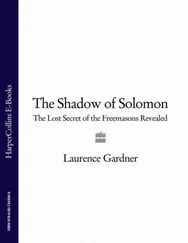Singapore has learned to manage long-standing tensions between its main ethnic groups (Chinese, Malay, and Indian) and religions. Mass transit is abundant, clean, and energy-efficient. 58There are wonderful parks, theaters, and museums. Singapore’s health care is excellent and its life expectancies are the fourth-longest in the world (seventy-nine years for men and eighty-five years for women). Aggressive law enforcement—while also leading to complaints of excessive strictness and a sort of police-state authoritarianism—has made corruption, violent crime, and the trafficking of sex and drugs virtually nonexistent.
Singapore is a good example of how rapid population and economic growth, when properly managed, can grow a city that not only has a large economy but is also technologically advanced, culturally vibrant, and an enjoyable place to live. To borrow a name coined by my UCLA colleague Allen Scott, 59it is a shining technopolis. Writes author Henri Ghesquiere about Singapore’s success: 60
Rapid growth was matched by enhanced well-being. The quality of life improved for large numbers of people. Singapore succeeded from the perspective of not only growth, but also social development. . . . China’s momentous decision in 1978 to reverse five centuries of economic isolation was influenced in part by Deng Xiaoping’s visit to Singapore that year. His dream to “plant a thousand Singapores in China” sparked numerous delegations on study tours to the island. South Korea was impressed with Singapore’s success in overcoming corruption. The city-state’s mastery in keeping urban traffic flowing has fascinated officials from many countries, and its housing program is studied by planners from around the world. Dubai eyes Singapore continually. . . .
Unfortunately, there is no rule saying a city must be a nice place to live in order to attract fast population and economic growth. Parks, good governance, and smoothly flowing traffic are optional, not required. Sometimes cities grow at an astonishing rate, despite being hell on Earth.
Take Lagos, Nigeria. Like Singapore, Lagos is a coastal port city, is built on an island, and was once a British colony. It guards the mouth of a huge swampy lagoon and for centuries has been one of the most important trading ports of West Africa. Over the years it has variously exported slaves, ivory, peppers, and, most recently, oil. Like Singapore, Lagos also won its independence from Great Britain in 1960. Both cities are located a few degrees north of the equator in moist, tropical climates. Both are governed by civilian democracies, although Nigeria’s is still young and shaky after years of military rule.
Since independence, Lagos’ population has grown even faster than Singapore’s—averaging about 5% annually since 1960. Between 2000 and 2010 its population grew almost 50%, from 7.2 to 10.6 million people. Nigerians are pouring in from the surrounding countryside and villages because there is money to be made in Lagos. The city has now run out of room, filling up its island and spilling across congested bridges to penetrate more than fifteen miles inland. By the year 2025, Lagos is projected to grow another 50% to sixteen million people, making it the twelfth-largest city in the world. With a 2007 gross domestic product of about USD $220 billion—bigger even than Singapore’s—Lagos is the economic epicenter of Nigeria and indeed of the entire western African continent.
Similarities between the two cities end there. Unlike Singapore, Lagos has not handled its growing pains well. It is an overcrowded dystopia of traffic jams, squalor, corruption, murder, and disease. Per capita income averages around USD $2,200 per year. Millions live in boats without electricity or sanitation. Four out of ten women cannot read. Police are outnumbered, ineffective, and unpredictably dangerous. The physical infrastructure is simply overwhelmed. Writes the urban geographer Matthew Gandy: 61
The sprawling city now extends far beyond its original lagoon setting to encompass a vast expanse of mostly low-rise developments including as many as 200 different slums. . . . Over the past 20 years, the city has lost much of its street lighting, its dilapidated road system has become extremely congested, there are no longer regular refuse collections, violent crime has become a determining feature of everyday life and many symbols of civic culture such as libraries and cinemas have largely disappeared. The city’s sewerage network is practically non-existent and at least two-thirds of childhood disease is attributable to inadequate access to safe drinking water. In heavy rains, over half of the city’s dwellings suffer from routine flooding and a third of households must contend with knee-deep water within their homes.
The flooding observed by Dr. Gandy is a serious problem. Lagos’ extreme growth has pushed development, much of it slum, into the city’s last remaining real estate: swampy, low-lying swales that are barely above sea level. Human excrement flows in open ditches. Drainage is so bad that when it rains, the waste floats into people’s homes. Fewer than fifteen people per hundred have piped water, most instead rely on shared outdoor taps or wells. Nearly all water sources are regularly contaminated with E. coli, streptococcus, and salmonella. Unsurprisingly, disease is rampant, including typhoid fever, yellow fever, Lassa fever, malaria, leptospirosis, shistosomiasis, hepatitis, meningococcal meningitis, HIV/AIDS, and the H5N1 avian flu. Human life expectancies are just forty-six years for men and forty-seven for women.
It gets worse. Two-fifths of the people living in Lagos are victimized by corruption, especially demands for bribes from their public officials. 62Robberies, assaults, and murders are a constant fact of life. Failed by their police and judiciary, citizens form vigilante militias with names like the “Bakassi Boys,” who fight back at criminals with machetes and shotguns. 63When government officials perceive disorder, they issue orders to shoot on sight. In general, police and soldiers are best avoided in Nigeria, as it is not uncommon for police officers to simply shoot potential suspects rather than arrest them. Nigeria’s National Human Rights Commission, a domestic agency charged with monitoring the country’s human rights violations, recently compiled a heartbreakingly long list of abuses, including the following three incidents: 64
[March 2, 2005] “A commercial bus with registration number, XA 344 plying the NorthBank to Wadata route was stopped by Police Constable (PC) Vincent Achuku, and without searching the bus, he demanded (money) bribe from the driver, Godwin Anuka. The driver pleaded with PC Achuku to let him continue with his journey and that he would pay on his return trip. This infuriated PC Achuku and he immediately cocked his service rifle, shot and killed the driver.”
[July 28, 2006] “In the early hours of July 28, 2006, officers of the Special AntiRobbery squad . . . went to the compound of Adulkadir Azeez, 70 years old, where he lives with his extended family. . . . The sound of a gunshot woke him up and he went out to find out the cause. Immediately he stepped out of his house, he was shot dead. The policemen then went to his son’s house (Ibrahim Abdulkadir), forced open the door and shot him dead too. The second son of the old man, Shehu Abdulkadir, heard the gunshots, opened his door and saw his father lying dead on the ground. He tried to find out what happened and was also shot dead by the policemen.”
[September 15, 2006] “On Friday, September 15, 2006, at about 3.00 P.M., a team of over 200 policemen in eight trucks from Delta State Police Command drove to Afiesere Community. . . . On arrival, they started shooting sporadically. According to media reports villagers including women and children took to their heels to avoid the bullets of the rampaging policemen. Those that could not escape were shot and killed or wounded. The policemen then looted several shops and homes before setting them ablaze. When the policemen eventually retreated around 5.30 P.M. 22 persons lay dead, 60 houses and 15 vehicles were burnt. The police also set ablaze two corpses while some were taken away and dumped in the bush. Five other victims, mostly elderly persons also reportedly died from shock over the incident.”
Читать дальше












